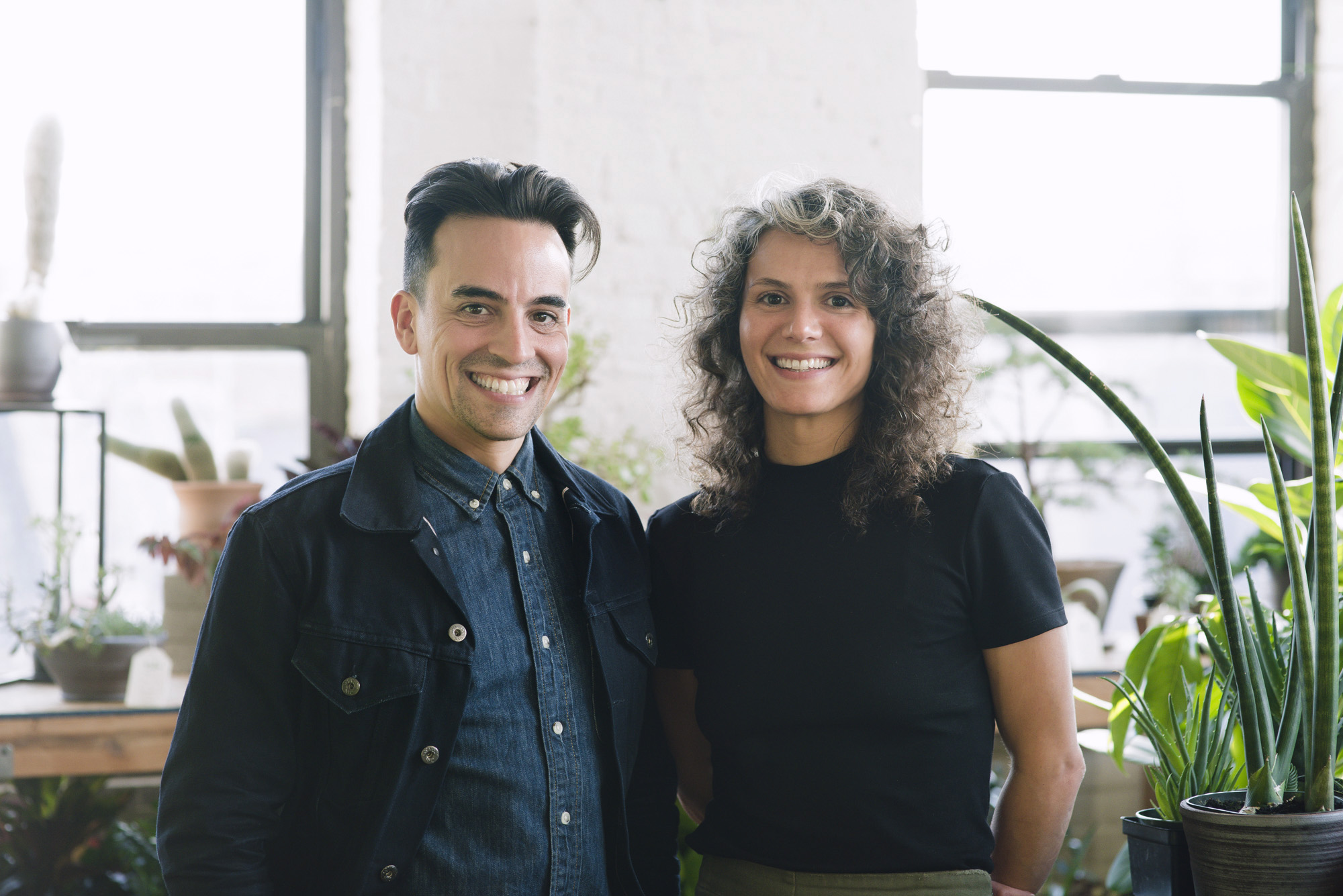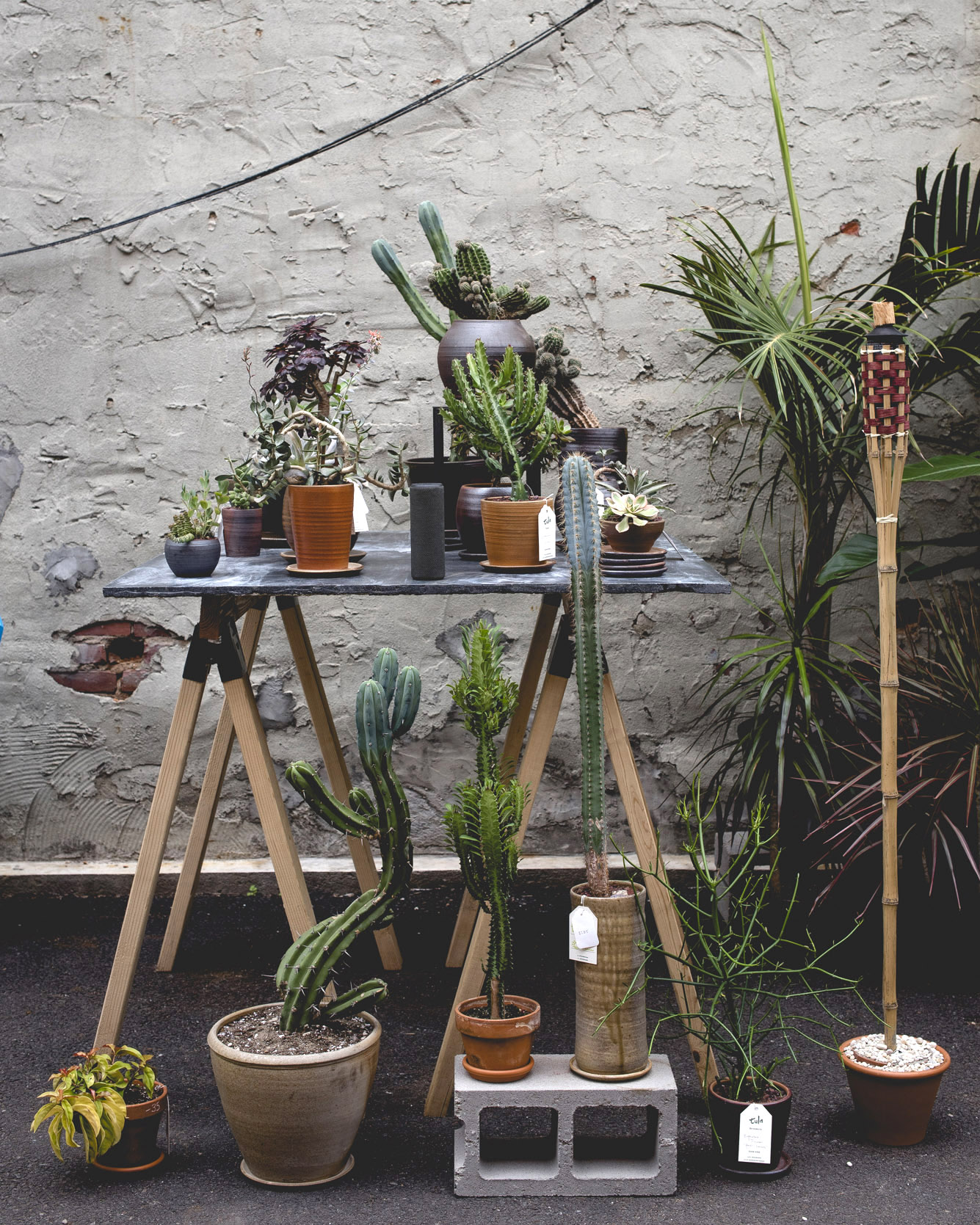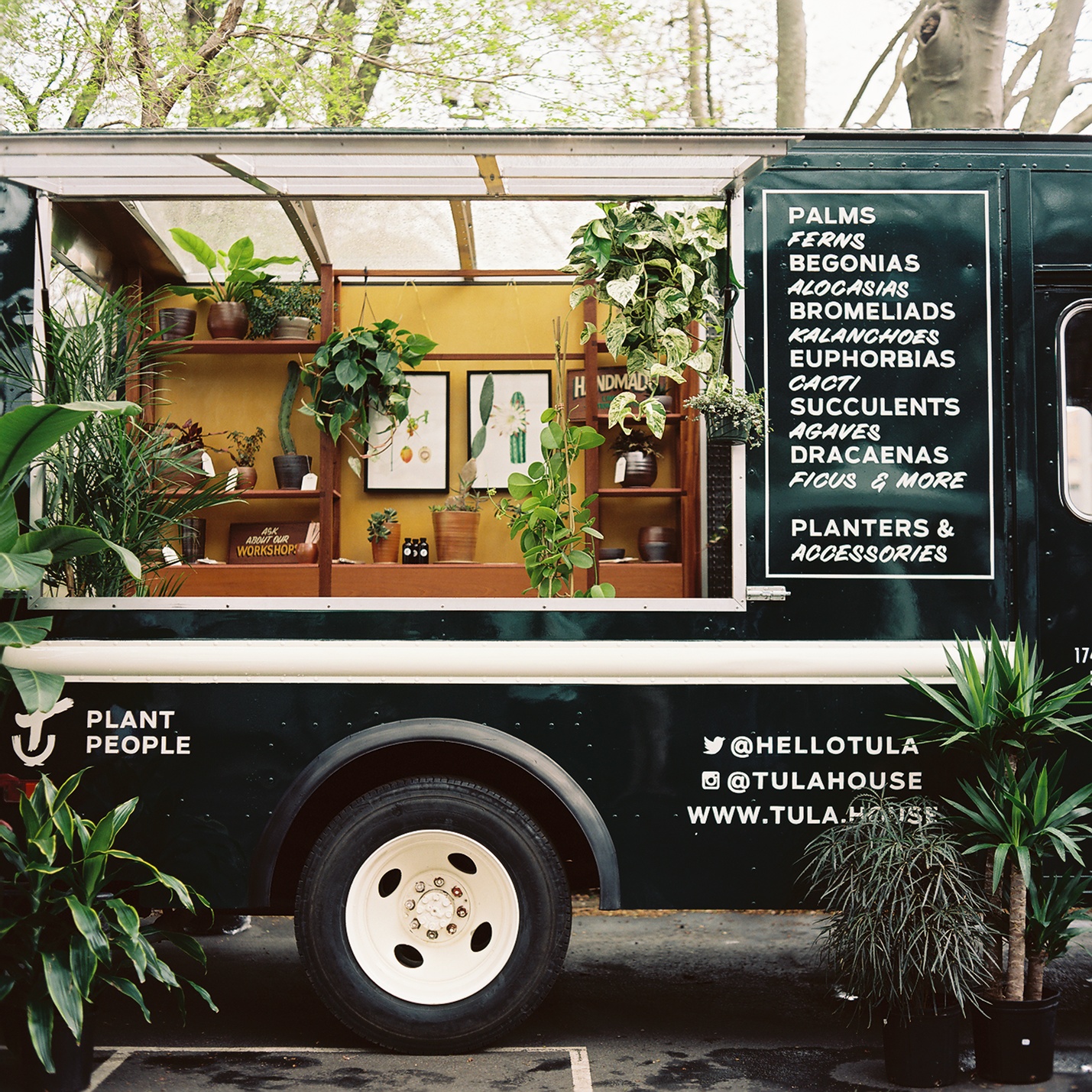
How Tula Plants & Design Is Innovating Decor Across Brooklyn
When Christan Summers and Ivan Martinez formed Tula Plants & Design in Brooklyn in 2016, it seemed like an inevitable arrival for the design-minded couple. Summers had an incredible eye for aesthetics, having done everything from designing jewelry in Bangkok in 2008 to running an e-commerce business and working with independent designers in Paris from 2009 to 2012. Martinez, who grew up in Miami where he was surrounded by plants (which he soon missed when his creative work took him to Brooklyn), was similarly ready for a change, having worked in advertising for the previous eight years, including time spent as a Creative Director at Edelman (with an MFA in design and technology and a BFA in photography and printmaking, no less).
At the time, Summers was also working in advertising, which she left to embark on the Tula journey. Growing up, her aunt had a flower farm on Martha’s Vineyard, and this, in part, was a lifestyle whose legacy she wanted to honor with the brand.
From the outset, neither Martinez nor Summers wanted Tula to function like a traditional plant shop.
“The common retail experience is a bit antiquated and there is a lot of room for innovation when approaching the model– especially for a plant and design shop,” Summers said of their initial idea, which was a showroom concept. “Real estate is expensive in New York, and I didn’t think we should put ourselves into debt in order to launch an idea off the ground,” she added.
Summers and Martinez later met Jordan Colón— a locavore chef who left his restaurant to become a potter— through Okonomi, an elegant ramen outpost in Brooklyn whose table ware Colón designed himself. They approached him about doing a seasonal collection of plant-focused pottery which included a Summer collection called “Naked”– a white and tan terra cotta concept with various elegant folds and sophisticated curves that were characteristic of Tula’s clean-but-refined aesthetic. As the seasons and their partnership progressed, Fall became synonymous with stoneware and so the next collection was wood-fired and autumnal.
Like the Summer collection, the Tula planters were designed for plants, so they were sturdy but still offered proper drainage holes– a rare combination of beauty and functionality that Summers and Martinez felt was lacking in the world of vessels. (“Standing behind your ideas and sticking with them is important– that’s why we only sell planters that have drainage,” Martinez notes.) The couple also liked the idea of bringing production back to America–as opposed to importing vessels from Sweden, China, Italy, and beyond– so they kept with that formula as Tula Plants & Design took off.
“We want people to feel personally connected to their plants,” says Summers. “They’re like your pet, only greener.”
With these and other collaborations, Tula Plants & Design aims to build a lifestyle brand by supporting local designers and independent artists whilst bringing them together around the magic of plants (their lookbook is very “horticulture meets fashion”, as is their slogan: “grow wild”).
Tula’s primary mission, however, is to encourage people to fall in love with plants, to teach them how to care for them, and to encourage appreciation of the natural world, because, as Martinez says, “it’s the most rewarding and terrestrial experience.”
“Social media and design have mislead people into thinking that plants can live wherever, and that’s something we wanted to rebel against,” he says of the brand’s emphasis on plantcare. “Everyone is killing their Fiddle-Leaf Fig trees, and everyone asks for them because they’re on all the blogs and inside all of the design magazines. But if you don’t have the right kind of light, air quality, and humidity level, the plant is going to suffer, and not many people realize that.”
Interaction, of course, is a necessary part of Tula’s educational formula. The couple’s original vision for how to bring people together around plants involved a greenhouse cafe featuring “plant-first design,” but the idea of building community and haute horticultural objects has carried through to their showroom, their current pop-up in Williamsburg (which is called Turf), and their seasonal mobile plant truck, Tulita.
“There are plenty of food trucks, a few retail trucks, sponsored airstreams and what not– but with the exception of flower trucks, this is truly a first of its kind,” the couple writes of their bespoke houseplant truck and how it came to be. “We heard many of you say how you wanted plants, but plant shops are either not in your neighborhood or out of the way. So we thought, ‘Why not bring the plants to you?'”
After purchasing the truck from a guy named John with a thick Brooklyn accent, Summers and Martinez revamped it in the image of greenery and named “her” Tulita. In addition to offering a full array of house plants “a la carte”, the Tulita truck provides customers with the option to purchase plants pre-potted directly from the vehicle– a further boon to attract those who might at first have shied away from buying plants.
If the future of Tula Plants & Design is all about education, then design, inclusivity, and lifestyle are also a part of the equation. With a highly-curated selection of increasingly unique species, “We want people to feel personally connected to their plants,” says Summers. “They’re like your pet, only greener.”
Tula House is opened their first ever pop-up shop in Williamsburg, Brooklyn on September 2nd, 2017.
For more information on where to catch Tula’s mobile plant truck, “Tulita”, check the latest listings on their website.
































































